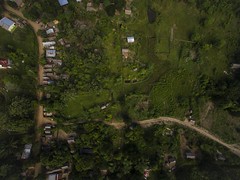Predator Free New Zealand – step 1.
The Fiordland National Park is a vast wilderness covering 1.3 million hectares. It is also the most extensive tract of wilderness in New Zealand. From afar it looks to be the magnificent and stunning landscape that it is, a landscape that draws hundreds of thousands of tourists and visitors to New Zealand every year. Ask any random sample of visitors or trampers to the park why is this place special or why they are here and you’ll get a common answer: It’s remote, untouched and wild. No roads criss-cross it’s valleys, no gondolas ferry the masses to it’s peaks, As a result, getting into Fiordland is a true wilderness experience, a place where you can feel like the human you evolved to be and not just another consumer of the values and trinkets western society and the advertising moguls would like you to be.

Waking up here, in the Devil’s Armchair, Llawrennys, Northern Fiordland is an experience that reminds one of the true scale of life and existence. Photo James Reardon
But all is not well in this magnificent wilderness. Pest species brought to New Zealand by European settlers, the mouse, rat, stoat and possum are all resident throughout this wilderness and all are slowly eroding the robustness of our native and threatened species and the assemblies of our forests. Eating seedlings, chicks in nests, adult birds nesting, the forest geckos in the trees, weta in the leaflitter, these pests are slowly but surely devouring the very essence of the Fiordland wilderness. The beech trees will remain, but the rich web of life that has evolved in this stunning place over millenia will be largely gone in my lifetime. The remarkable fact is that when my great grandfather was my age, pests were first entering these ecosystems and the flora and fauna was largely in-tact except for the species already lost to the impacts of Polynesian settlers and the Pacific rat (kiore) and the dogs they brought with them.

The convention obliges New Zealand’s government to take responsibility for the erosion and loss of both species and ecosystem processes
So what must be done? New Zealand is a signatory to the Convention of Biological Diversity which states that the government takes responsibility for halting the loss of species and ecosystems. We need to use the most effective, strategic, cost-effective and sustainable means to first recover and then protect our natural heritage. In some places where access is easy and their is a populous and willing volunteer labour source we might make some gains with trapping of predators such as stoats and even possum. On islands we can often eradicate pest species all together and then work to maintain those places as pest free through biosecurity. There is now a startling new initiative called ‘Predator Free New Zealand’ http://predatorfreenz.org/ which suggests it will work towards the eradication of rats, mice, stoats, ferrets, weasels, ferel cats and possum from New Zealand! What a wonderful vision. However, to advance towards that vision surely we need to at least prove we can sustainably manage large areas of our wilderness, and indeed, if we don’t, by the time we have the skills, tools (and vitally) the hundreds of millions of dollars to achieve such a programme of work, there will be next to nothing left to conserve on mainland New Zealand. A conservation FACT is that it is infinitly easier and cheaper to maintain a species or ecosystem through management than it is to rebuild and reconstitute it through planting and translocating founder populations back into an area. We must act now to halt the collapse as the losses and declines are not historic, they are contemporary and on-going. Ever heard of the Chesterfield skink? Not many have but this little west coast skink is probably going to go extinct before we even understand it’s ecology. It’s time for action and it’s time to wrap our brains around the facts and examples of where extensive pest management is working to protect and conserve large and robust remnants of our wildlife.
Make yourself a nice coffee or crack open a fine ale and settle in to listen to Dr. Graeme Elliott:










